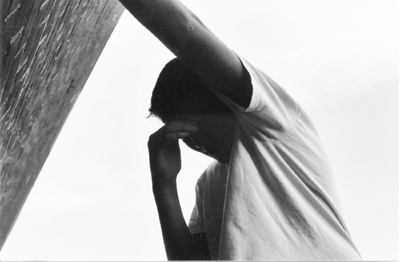All Nonfiction
- Bullying
- Books
- Academic
- Author Interviews
- Celebrity interviews
- College Articles
- College Essays
- Educator of the Year
- Heroes
- Interviews
- Memoir
- Personal Experience
- Sports
- Travel & Culture
All Opinions
- Bullying
- Current Events / Politics
- Discrimination
- Drugs / Alcohol / Smoking
- Entertainment / Celebrities
- Environment
- Love / Relationships
- Movies / Music / TV
- Pop Culture / Trends
- School / College
- Social Issues / Civics
- Spirituality / Religion
- Sports / Hobbies
All Hot Topics
- Bullying
- Community Service
- Environment
- Health
- Letters to the Editor
- Pride & Prejudice
- What Matters
- Back
Summer Guide
- Program Links
- Program Reviews
- Back
College Guide
- College Links
- College Reviews
- College Essays
- College Articles
- Back
The Oreo Effect MAG
There seems to be a universal rule when it comes to the Oreo cookie. First: rip the chocolate pieces apart and lick the icing with glee. Second: mash the naked cookies together, dip in milk, and devour. Instead of savoring the treat as a whole, the pieces are torn apart and enjoyed separately. This is called the Oreo Effect. And this is the nature of being biracial.
In 2000, the Census Bureau allowed for the first time the option to self-identify as multiracial, which revealed that the number of people identifying as biracial or multiracial had skyrocketed within the decade by almost 50 percent. Almost 7 million Americans nationwide today state that they come from multiple racial backgrounds. Despite this, life as a “mixed” person is confusing, frustrating, and isolating.
I was first exposed to this so-called Oreo Effect in school. I remember being somewhat of an oddity, an exotic class pet. “He talks white, but his skin is brown. He’s like an Oreo!” my peers would say.
My pieces would be dissected according to who I was with at the time. My white friends would cherish my “white-sounding” voice and exclaim how, “He doesn’t even really count as black.” With my black friends, I was forced to shove my white half into the deepest, darkest closet – usually meaning I would speak in Ebonics – in order to fit in. People took the parts of me that they wanted.
Why would this happen if the biracial population is skyrocketing? Why would this happen if people like me are becoming the norm? The answer is that people aren’t willing to abandon the standard black/white view. They like viewing things in terms of black or white. It’s simpler. More compact. This is exactly what multiracial people are not.
My experiences are certainly not exclusive to me; the consequences of being mixed race often reach across all race and ethnicity combinations and account for one of the reasons why multiracial teens experience an astronomical incidence of identity crises. We feel the need to put ourselves in a box for the benefit of society, such as being simply “black” or “white.” Our mixed identity becomes smudged until we can appear as the world wants us to be, not as what we are. So we assist in the continuation of the Oreo Effect. We pull ourselves apart and show off what we think the world will accept.
Fortunately, mixed awareness is on the rise, though not to the point of preventing issues of identity in adolescents. The twenty-first century cannot be defined by singularity, simplicity, or a single check mark in a racial box. Growing up biracial can be lonely. Having to define oneself solely in the identity-stripping terms provided can be excruciating. Multiracial visibility is not just a courtesy; it’s a necessity. People may not want to recognize that we exist, but that doesn’t change the fact that we do.
I am not simply black. I am not simply white. I am both. I am biracial. And I am here to stay.

Similar Articles
JOIN THE DISCUSSION
This article has 4 comments.

Despite what one can gather from skin color, what's underneath the surface often has a different story to tell. I wanted to share my experience with my biracial identity being erased in hopes that it will inspire others to support multiracial visibility.